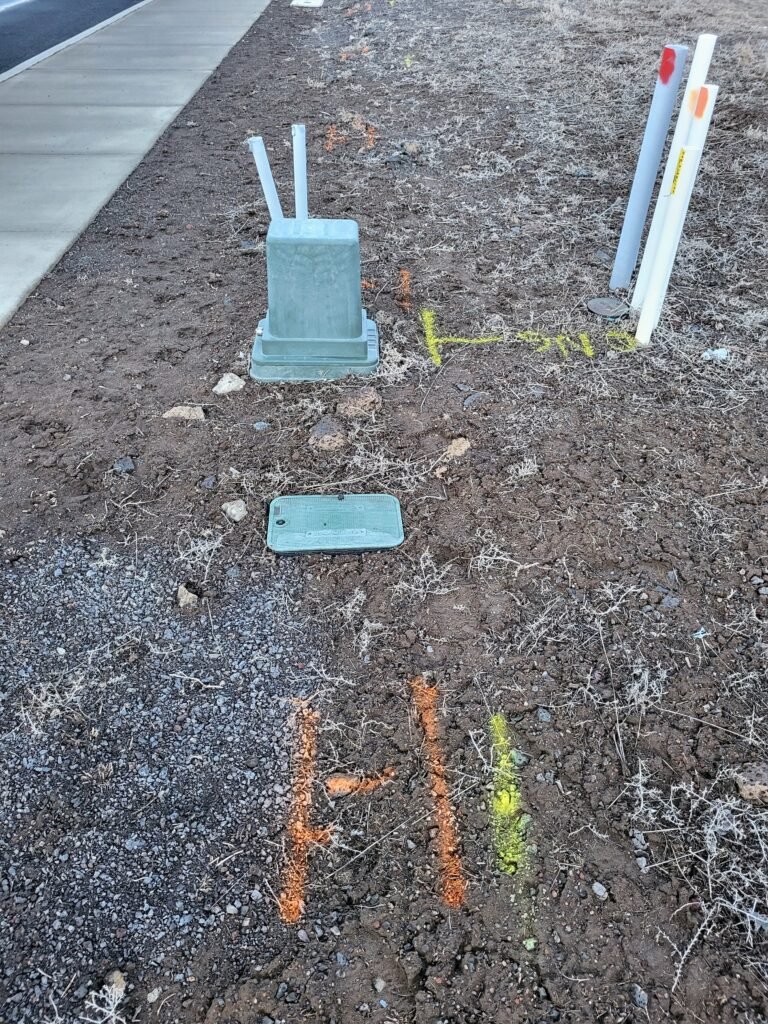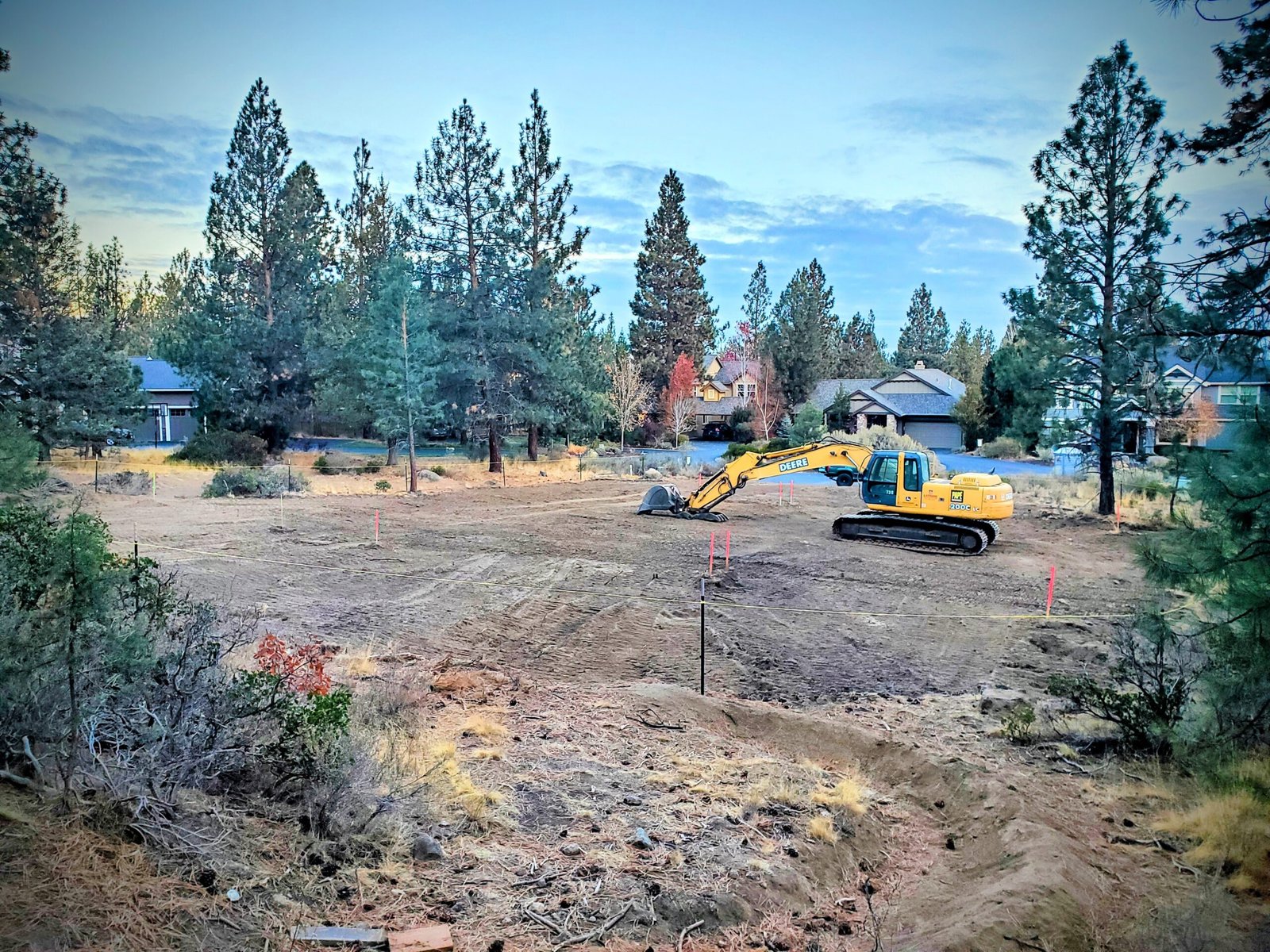How to Read Utility Markings on Vacant Land: A Site Due Diligence Essential
When you walk a vacant lot for a potential build, the first thing most people notice is the view or the slope. But seasoned pros know to look down first. Specifically, at the spray-painted lines, wooden stakes, or capped pipes with colored paint scattered across the dirt. These markers aren’t random. They tell the story of what’s buried underground—and ignoring them could cost you thousands.
Understanding utility markings is a critical step in your due diligence process. Whether you’re a builder, developer, or agent advising a buyer, knowing how to interpret these indicators helps prevent project delays, surprise costs, and major headaches.
Why Utility Locates Matter
Before any excavation begins, you need a clear picture of existing underground utilities. That includes:
- Where power, gas, water, and sewer lines run
- Whether the lot has stub-outs in place
- How far utilities must be extended (if they’re missing)
Missing or misidentified utilities can delay permits, increase costs, or even make the lot unbuildable without major investment. Spotting the color-coded clues early can help you ask better questions—or walk away before you’re in too deep.
Utility Locate Color Codes Explained
Utility markers follow a national color standard to indicate the type of line or service underground:
- 🟥 Red: Electric power lines, lighting cables
- 🟨 Yellow: Gas, oil, steam, or petroleum lines
- 🟧 Orange: Communication, alarm, or signal lines (including fiber)
- 🟦 Blue: Potable water lines
- 🟩 Green: Sewer and drain lines
- 🟪 Purple: Reclaimed water, irrigation, or slurry lines
- 🩷 Pink: Temporary survey markings
- ⬜ White: Proposed excavation area
These markings are temporary but important. If you see them, someone else has already called in a locate—or utilities may be actively servicing the lot.
Calling 811: The Legal Path to a Locate
In most states, the law requires you to call 811 before you dig. But here’s the catch: you can’t legally call in locates unless you own the property or have written authorization.
If you’re in a purchase agreement and still in the due diligence period, you can request the seller to sign an Owner Authorization Form. This gives you the legal clearance to call 811 and have utilities marked. It’s a step that can uncover deal-breakers early, or confirm that your site is ready for development.
Pro Tip: Call 811 at least 2–3 business days before you plan to walk or inspect the lot. It’s free, fast, and can save you from major setbacks.
When to Use Private Utility Locators
811 services mark public utilities—but they often won’t mark private lines. That includes:
- Secondary electric lines (e.g., from meter to garage)
- Septic systems or private water laterals
- Underground propane tanks or irrigation lines
For a full picture, especially on previously developed lots or larger properties, consider hiring a private utility locator. These professionals use ground-penetrating radar and electromagnetic tools to map lines the city won’t mark.
Real-World Example: The Missing Power Stub
We once reviewed a property that was advertised as “power at the street.” The site walk showed a green transformer box nearby, but no red utility markings or painted stakes on the lot. After securing Owner Authorization and calling 811, it became clear: the nearest available drop was over 500 feet away. Estimated cost to bring power in? Over $20,000.
That single missing mark changed everything for the buyer.
What to Look For During a Site Walk
Bring this checklist when walking a lot:
- Look for color-coded stakes, paint lines, or pipe stubs
- Check for visible stub-outs or capped pipes near lot corners
- Match what you see with plat maps or utility records
- Ask for past locate tickets or records from the seller
- Use your SiteFacts Report to verify utility access, easements, and distance-to-connection estimates
Internal and External Resources
- Internal Link: For more on evaluating a lot’s slope, access, and soil type, check out our Beginner’s Guide to Land Due Diligence
- Internal Link: Want it all in one place? Our SiteFacts Reports deliver utility insight, permit flags, zoning codes, and site-specific risks in a single turnkey document.
- External Link: Call 811 – Know What’s Below

Conclusion: Listen to What the Lot Is Telling You
When it comes to site development, ignorance isn’t bliss—it’s expensive. Reading utility markings isn’t just for contractors. It’s an essential part of evaluating whether a lot is truly ready to build.
The next time you’re on site, look for the colors. They might tell you everything you need to know.
Want help evaluating your next property? Visit www.sandandsagesolutions.com or explore our SiteFacts Reports for fast, flat-rate due diligence.




